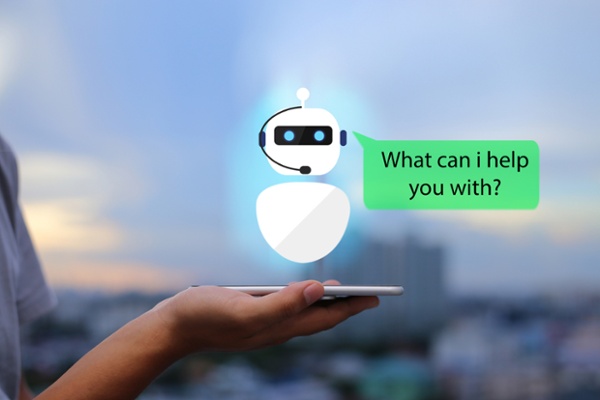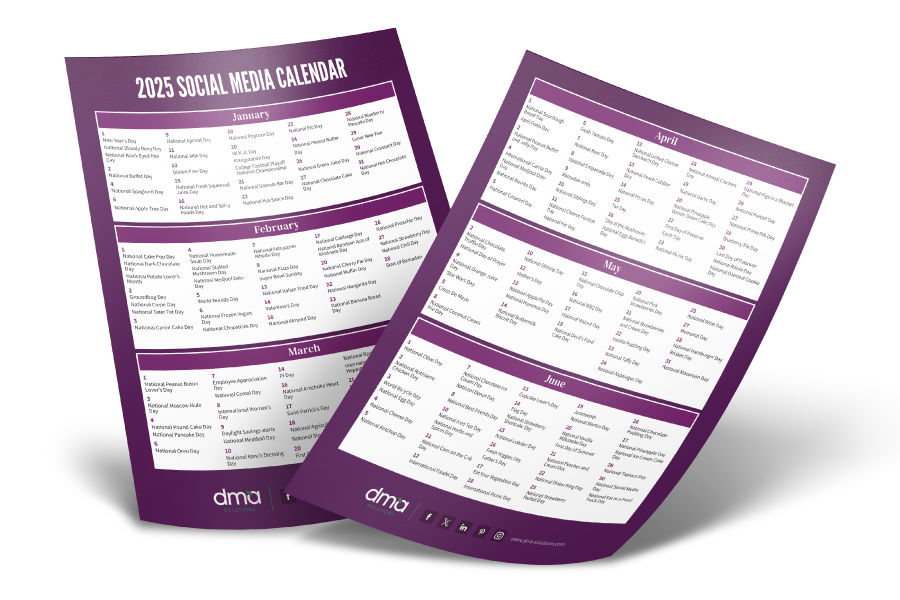Our societal obsession with robots isn’t a new phenomenon, as evidenced by years of Hollywood interpretations of human-robot interactions. At best, we idealize the notion that robots and artificial intelligence will advance to the point that robots can feel real human emotions, and at worst…well, none of us would be left to tell the tale!
Even this year’s Super Bowl ads surfaced bots as a bit of a theme for 2019, with 16% of the ads focused on them. But the truth is, despite our wildest fantasies about bots, in business they are a tool to help us improve efficiencies and automate certain tasks, as evidenced by the rise of chatbot use in marketing and customer service.
What is a Chatbot?
Chatbots are simply a computer program designed to simulate conversation with human users, especially over the internet.
Have you ever had one of those “How can I help?” pop-up boxes appear in the corner of your screen? Or have you ever sent a Facebook message to a company and received a very, very instantaneous reply? That was most likely a chatbot!
According to Gartner, chatbots will power 85% of all customer service interactions by 2020. So, as a fresh produce marketer, does that mean you need to have chatbots installed on your website or on your Facebook Messenger to keep up in 2020? Are bots the “next big thing” in marketing? Perhaps…but perhaps not. Chatbots present fresh produce marketers with several worthwhile opportunities to consider, but there are also drawbacks. Here’s what you need to know to make the best decision for your brand:
How Can Produce Companies Use Chatbots?
To Automate Customer Service
Bots are mainly being used for customer service functions, particularly when someone has a complaint.
A study conducted by Drift, SurveyMonkey Audience, Salesforce, and myclever found that 37% of people who engaged with a chatbot did so because they were looking to get a quick answer in an emergency. 35% of people were trying to resolve a problem or a complaint. In our modern world of instant gratification, marketers should consider that chatbots provide value by reducing the time and resources needed to respond to FAQs, even (and especially) during non-work hours.
To Quickly Address a Major Complaint or Food Safety Question
Along the lines of customer service, the most intriguing chatbot opportunity for fresh produce brands is utilizing them to instantly address a food safety complaint. Chatbots can create efficiencies by asking the appropriate questions to gather essential info (Think: where did you purchase the product? What is the lot number?) and then sorting it for a human to follow up. Note: a bot could alert a human ASAP should the complaint involve a food safety threat.
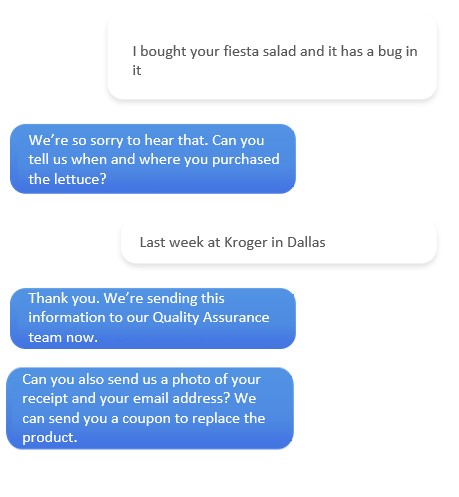
To Provide Product Inspiration
In the same study, 22% of people reported that they’ve engaged with a chatbot to get ideas or inspiration from a brand. While this may not seem like a lot, it presents produce companies with a new way to inspire consumption of their products. A notable example of this is the “AvoGuru” chatbot by Avocados from Mexico. This bot, found when you message the brand on Facebook, will provide recipes and storage and selection tips for avocados. Here’s a few screenshots from my own interaction with the AvoGuru:

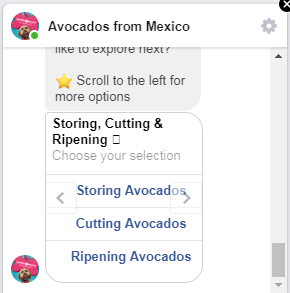
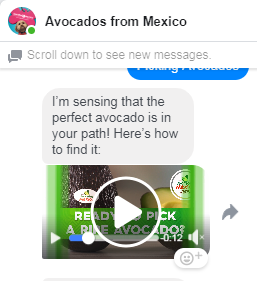
The Bigger Chatbot Opportunity for Produce
Chatbots as a Sales Tool
Chatbots don’t only provide value when it comes to engaging with consumers. In fact, there might be a much more valuable opportunity in terms of ROI for produce marketers who consider bots as a tool for their B2B efforts. Imagine if a chatbot lived on the trade side of your website and interacted with customers to quickly gather information for your sales team, or answer standard FAQs for your partners to provide a quick consumer touch-point—while saving valuable time and effort for all involved.
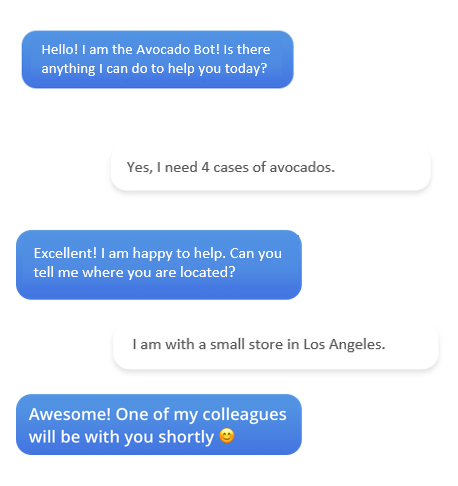
The Real Value of Chatbots: Automation and Efficiency
An Opportunity for 3PLs, ERPs and Industry Service Providers
Many industries are utilizing chatbots behind the scenes to automate communications and info retrieval along the supply chain. Imagine if 3PLs (third-party logistics), ERPs (enterprise resource planning) or other service providers that work with fresh produce growers and retailers used chatbots to help customers gain more visibility into their supply chains? Could we save on valuable time and resources in the shipping phase that are currently spent answering questions about where a product is located?
Chatbot Drawbacks: You Can’t Replace Human Interaction
People Still Want to Interact with Other People
Recently, AdAge included chatbots on the “not hot list” for 2019. The publication wrote that, “With a reported 70 percent failure rate on Facebook, consumers are looking instead to have human-first interactions with brands. That’s not to say that online chat won’t continue to grow as a staple of customer service, it will just be with a lot less bot. Instead, the AI that powers chatbots will play a vital background role to facilitate person-to-person chat.”
As humans, our relationship with bots is a complicated one, and many of us still don’t trust anything that comes from a robot (even if it is as cute as R2D2 or Wall-E!). If you do choose to utilize a chatbot in your marketing, it’s essential for the bot to identify itself as one at the start of the conversation. And remember, chatbots will never be able to fully replace the importance of the human touch when interacting with the people who buy your products. Bots can be a great tool to help expedite and streamline person-to-person interactions—not replace them!
Have something to add? Leave us a comment below, or tweet to us at @TheCoreBlog!
{{cta(‘bcd8a198-582f-4f95-bbc3-fd4254518f02’)}}
